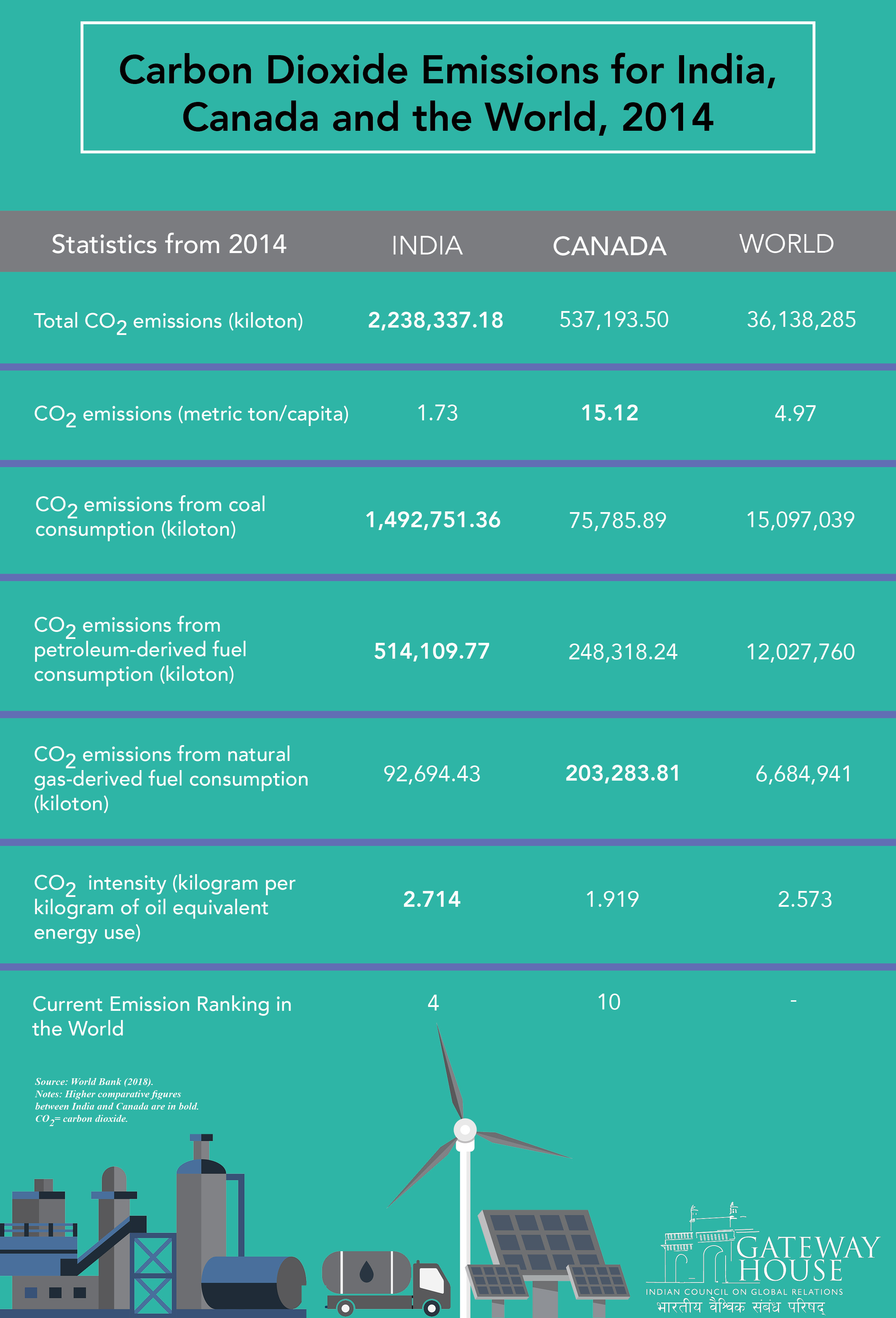This infographic is based on the paper Making Terrestrial Geoengineering Technologies Viable: An Opportunity for India-Canada Climate Leadership, which is part of the India-Canada Track 1.5 Dialogue series. Click here to view the paper.
Economic activity governs the rise and fall of carbon dioxide (CO2) emissions. Robust economic growth and the undiminished use of coal in countries like India are driving the trend. This infographic shows a comparison of statistical data on carbon emissions from two countries, India and Canada, widely disparate in development parameters, yet parties to the Paris Agreement in their own distinct ways. Both have committed themselves to setting national targets for reducing greenhouse-gas emissions, but the contrast is notable, as this infographic shows: India, a newly industrialising country, with its massive, geographically condensed and growing middle-income population has a significantly low per capita rate of carbon emission. Canada has a sparse, but high-income population with growing standards of living: its per capita CO2 emissions are among the highest – 15.117 metric tonnes in 2013 – in the world.
India’s greenhouse gas-emitting industries are undertaking environmentally compliant practices and reducing their carbon gas-footprint and its conglomerates are adopting internal business policies for climate change that align with national policies. Indian companies are seeking international partnerships and investments in joint R&D and implementation of carbon capture storage and utilisation technologies.
Canadian R&D companies are making tremendous progress developing cutting-edge carbon-capture, utilisation and storage technologies which will enable cleaner oil-extraction processes and enhanced oil recovery. These proprietary technologies will find many takers in industrial sectors not only in Canada but also in India and other countries as well.
This infographic is based on the paper Making Terrestrial Geoengineering Technologies Viable: An Opportunity for India-Canada Climate Leadership, which is part of the India-Canada Track 1.5 Dialogue series. Click here to view the paper.
Chaitanya Giri is Fellow, Space and Ocean Studies, Gateway House.
Designed by Daniella Singh, Design Associate, Gateway House.
This infographic was exclusively created for Gateway House: Indian Council on Global Relations. You can read more exclusive content here.
For interview requests with the author, or for permission to republish, please contact outreach@gatewayhouse.in
© Copyright 2019 Gateway House: Indian Council on Global Relations. All rights reserved. Any unauthorized copying or reproduction is strictly prohibited.
